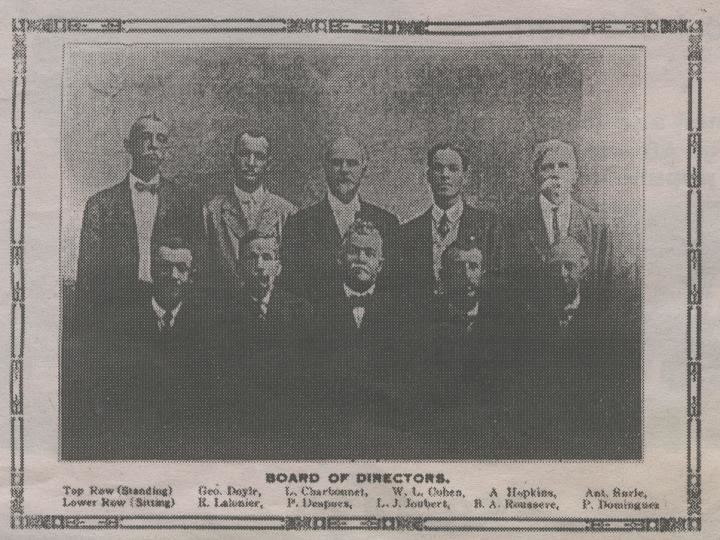Name Marie Couvent | ||
 | ||
Marie Bernard Couvent (c. 1757 – June 28, 1837), also known as Justin Fervin, Maria Gabriel Bernard Couvent, and Marie Justine Cirnaire, was an African-American woman primarily known and remembered for her philanthropy. Born in West Africa, and shipped to Saint-Domingue as a slave, Couvent nonetheless obtained her freedom and lived in New Orleans, Louisiana, where she married, accumulated property and wealth, and eventually died. She is best known for dedicating the property that would be used to construct the Institute Catholique to that purpose in her will.
Contents
Early life
Marie Couvent was born in Guinea, a name that was often used to describe the west coast of Africa in this period. In her will, Couvent testifies that she was shipped to the French colony of Saint-Domingue as a slave around the age of seven. Because of this, she lacked any memory of her parents, and received no formal education. Throughout her entire life, she could neither read nor write.
New Orleans
Marie Couvent eventually arrived in New Orleans and attained her freedom, although the events that led to these changes, and their dates, remain unknown. It is likely that she escaped during the Haitian Revolution. In New Orleans, she married Gabriel Bernard Couvent, a free black man and carpenter. Together, they lived on Barracks Street in the lower French Quarter, and accumulated land and other properties.
Slaves
The Couvents owned several slaves throughout their lives, but petitioned the Orleans parish government to grant freedom to three of them. In 1821, Marie and Gabriel Bernard Couvent petitioned for the freedom of an enslaved woman named Pauline. In 1829, Bernard Couvent petitioned for the freedom of two other enslaved women, Seraphine and Fillette. However, Bernard Couvent died on the 22nd of May, before they were freed. In 1831, Marie Couvent refiled the petition, stating that the women had served her well and nursed her in times of illness.
Marie Couvent's will
In her 70s, Marie Couvent informed Father Constatine Maenhaut (sometimes written Manehault), a priest at Saint Louis Cathedral in New Orleans, of her desire to help found a school for orphan children. Couvent, a devout Catholic, considered Father Maenhaut to be a spiritual mentor. In 1832, she recorded her final will. It read, in part:
"I bequeath and order that my land at the corner of Grands Hommes and Union streets [now Dauphine and Touro] be dedicated and used in perpetuity for the establishment of a free school for the colored orphans of the district of Marigny...."
Father Maenhaut and the future clergy of Saint Louis Cathedral were entrusted with the supervision of this will and its aims. Henry Fletcher, who had been a friend of Bernard Couvent, was tasked with executing the terms of the will. Marie Couvent died on 28 June 1837, at about 80 years of age. However, the school she had hoped to establish in her will would not be built until almost a decade later. Fletcher had failed to construct it, primarily due to opposition from city officials. Father Maenhaut set about trying to construct the school, and enlisted the aid of a man named Francois Lacroix. Lacroix aided in the foundation of the Society for the Instruction of Indigent Orphans, which raised funds and sued to gain access to Marie Couvent’s property. They succeeded in winning their court case in 1846, and the school finally opened in 1848, eleven years after Marie Couvent's death.
